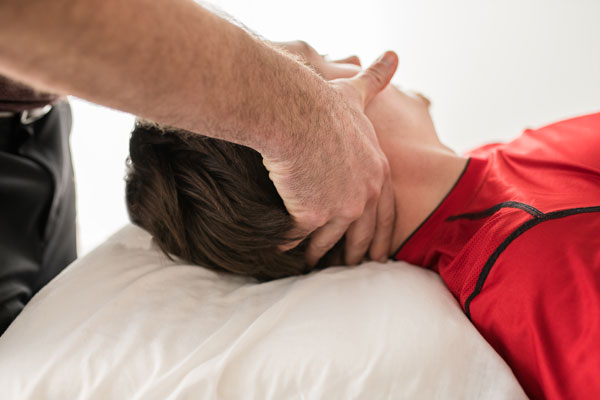18 Nov 5 Common Jaw Pain Culprits And How Physio Can Help (Sherwood Park Guide)
Jaw Pain in Sherwood Park: What You Need to Know

Jaw pain can sneak up on you — whether it’s a dull ache while eating, a sharp pain when yawning, or a clicking noise every time you open your mouth. For many Sherwood Park residents, these symptoms point to a common issue known as TMJ disorder (TMD), which affects the joints that connect your jaw to your skull.
Let’s look at five common causes of jaw pain and how physiotherapy can help you find lasting relief.
Most common TMD/TMJ Disorder culprits
- Physical trauma to the jaw or mandible (car accident, sports incident, etc.)
- Poor posture, which leads to pressure on the joints
- Teeth clenching and grinding
- Lack of sleep / stress and an inability to relax
- Food choices and/or gum chewing
Most common TMD symptoms
- Pain when chewing, swallowing, and talking
- Clicking or popping sounds
- Tightness/reduced mobility
- Headaches
- Muscle spasms
- Locked jaw
Does this sound like you? Physio can help get you back on track!
Benefits of Physio
Studies show that a combination of patient education/training, jaw exercises, and manual therapy provided by a skilled physiotherapist can help reduce discomfort while also addressing the root cause of the issue.
WHAT TO EXPECT FROM YOUR TMD TREATMENT

A thorough and accurate assessment | The first and arguably most important step for your therapist is to understand and diagnose your issue. They’ll achieve this through an in-depth assessment process, which takes your physical, mental, and emotional health history into account. Only once your physiotherapist has thoroughly evaluated your unique situation can they create a treatment plan that’s tailored to your individual needs.
Education | Once they’ve properly diagnosed your concern, your therapist will take the time needed to educate you on their findings and plan moving forward. To create a meaningful impact, you’ve got to understand what’s going on in your body and be on board with the therapist’s plan for your treatment.
Manual Therapy | The next step is when the therapist rolls up their sleeves and uses advanced hands-on techniques to help eliminate your pain, increase your mobility, and restore your function so you can get back to pain-free living. This will include gentle massage, mobilization techniques, and manual stretching.

Exercise Prescription | Finally, to help create ongoing improvement and symptom resolution, your physio will prescribe stretches and/or exercises for you to work on at home, between visits. They’ll even send you videos/photos of each movement to keep you on track.
What’s Next | If you’ve got additional questions, please feel free to reach out to us at Acceleration Physiotherapy Sherwood Park.
To book your assessment, click here!
Sorry, the comment form is closed at this time.